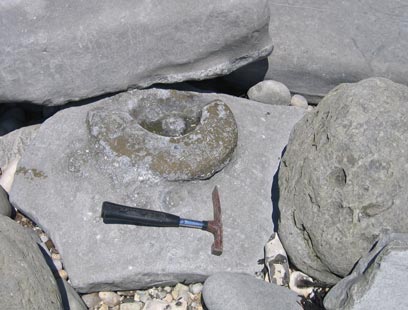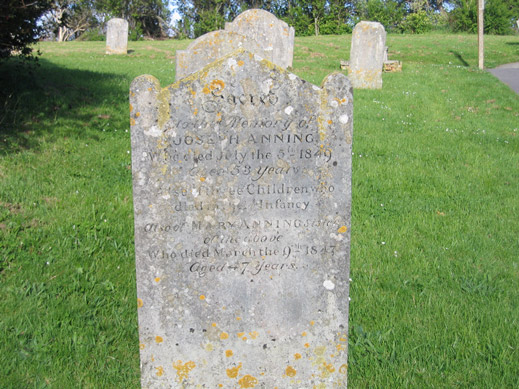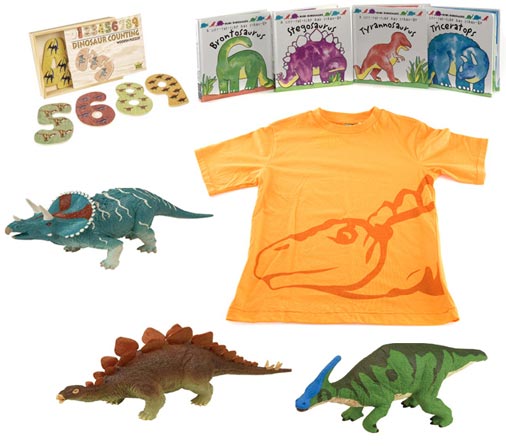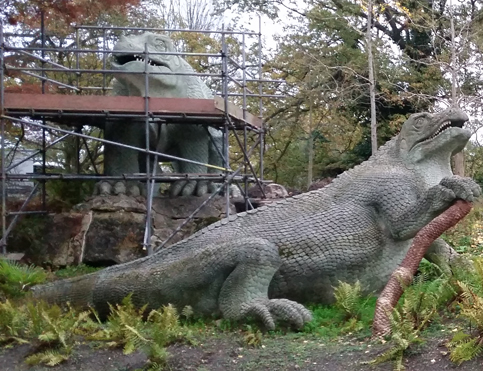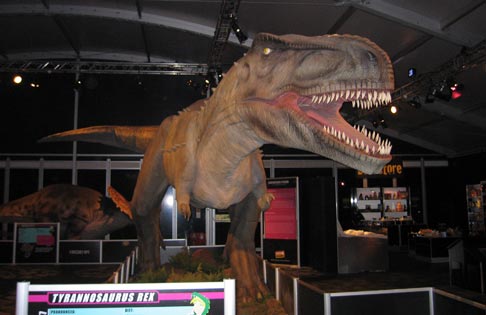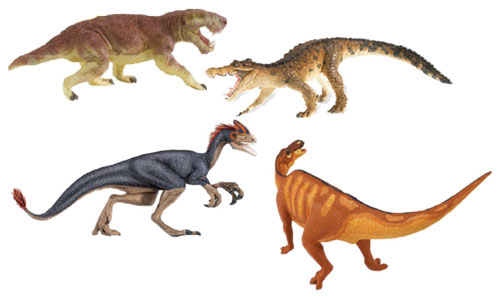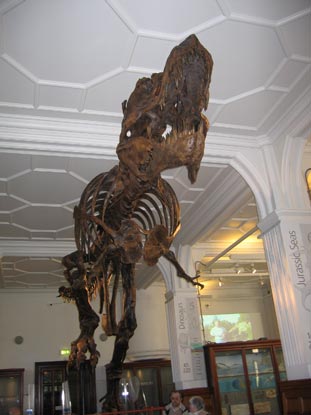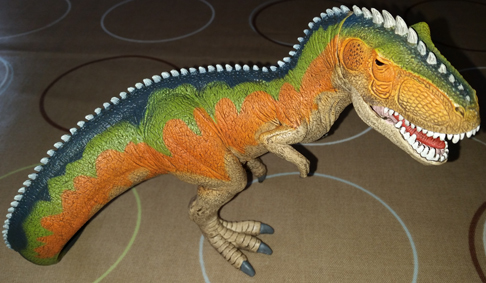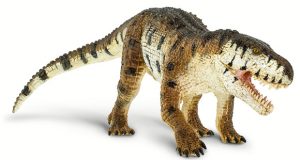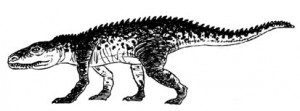Mass Extinction Event Opened up New Opportunities for Vertebrates
A paper published in the scientific journal “The Proceedings of the National Academy of Sciences”, by a team of American researchers points to a “seismic shift” in vertebrate evolution at the end of the Devonian Period. A mass extinction event, some 360 million years ago, so affected life in freshwater and marine habitats that the older forms of vertebrate life effectively gave way and new vertebrates, our distant ancestors, had the chance to take over. The road was laid open for the surviving tetrapods that would eventually lead to the dinosaurs, birds, mammals and of course our own species.
Late Devonian Mass Extinction
The Late Devonian mass extinction is also known as the Hangenberg event, named from the Hangenberg shale formations that help to mark the Devonian/Carboniferous boundary. It is one of the “big five” extinction events known in the Phanerozoic Eon. Although, there has always been a level of background extinctions and there have been many incidences of significant extinction events throughout the history of life on Earth, scientists have identified five especially severe extinction events in the Phanerozoic Eon.
The Late Devonian extinction event severely affected many invertebrate and vertebrate families, especially those of tropical reef-dwelling organisms such as corals, brachipods, bivalves and ancient sponges. However, it is the demise of prehistoric fish groups such as the placoderms and the actinistians (lobe-finned fish) that may have led to the rapid diversification of the ray-finned fish and the early tetrapods.
The authors of this scientific paper, postulate that the mass extinction of prehistoric fish some 360 million years ago, cleared the way for the evolution of modern vertebrates.
Lead author, Lauren Sallan of the University of Chicago stated:
“Everything was hit, the extinction was global. It reset vertebrate diversity in every single environment, both freshwater and marine, and created a completely different world.”
Compared to earlier mass extinction events in the Palaeozoic, the Late Devonian extinction does not seem to have been as severe, when the percentage loss of marine invertebrate genera (easier to measure in fossil record) is calculated. However, by the Late Devonian, life on planet Earth had become more diverse than in earlier periods such as the Cambrian and Ordovician. There were far more species in total and many more species per genera. The Late Devonian mass extinction event wiped out a far higher number of taxa in absolute terms.
Devonian Mass Extinction
While the mass extinction at the end of the Devonian period is among the five most significant in the Earth’s history, researchers are not certain as to how it was triggered or indeed what the major causes of the extinction were. The Late Devonian event, in common with most other extinctions does not appear to have been caused by a single overriding factor, this extinction seems to have been precipitated by a combination of factors that lasted over the course of some 20 to 25 million years.
Scientists have found evidence of extraterrestrial impacts in the geological record and also traces of iridium from volcanic eruptions, these factors may have helped cause instabilities in food webs and this may have contributed to the extinction event. Although, global sea levels were much higher than they are today throughout the Devonian, there was a dramatic fall in sea level towards the end of the Devonian period. Substantial glacier formation has been indicated, the onset of a global cooling.
This would have triggered climate change and put ecosystems under pressure. The formation of glaciers would have locked up large amounts of water and this would have led to the lowering of sea levels, substantially affecting marine and subsequently freshwater faunas and floras.
A Model of a Placoderm – Dunkleosteus

A stunning model of a placoderm – the PNSO Dunkleosteus model.
The placoderm model (above) comes from the PNSO range, to see this range: PNSO Age of Dinosaurs.
The establishment of the first masses of plant materials on land, the first forests and such like could also have had a radical effect on the atmosphere, which in turn could have affected life on Earth.
What Caused the Extinction Event?
Whatever, the cause (or causes) of the extinction event, those groups of fishes such as the armoured placoderms and the lobe-finned fish which had dominated ecosystems were replaced by the ray-finned fish in a demographic shift that persists to this day, according to the authors of this research paper.
It is certainly true, that impressive beasties such as the fearsome, 10-metre long Dunkleosteus (Placoderm) became extinct, providing an opportunity for other organisms. Dunkleosteus (D. terrelli) was a formidable predator of marine environments feeding on fish, including primitive sharks and cephalopods. With two pairs of tooth plates (extensions of the jaw bone) and an interlocking plate in the lower jaw, Dunkleosteus is armed with jaws that resemble a razor sharp vice. However, these animals were to become extinct by the end of the Devonian.
A Scale Drawing of the Fearsome Placoderm Dunkleosteus

Picture credit: Everything Dinosaur
To view the Dunkleosteus model used in the diagram and other prehistoric animal figures: Safari Ltd. Wild Safari Prehistoric World.
Commenting on the extinction event that led to the demise of such fish groups as the placoderms, co-author of the paper, biologist and anatomist at the University of Chicago, Michael Coates stated:
“There is some sort of pinch at the end of the Devonian. It’s as if the roles persist, but the players change; the cast is transformed dramatically. Something happened that almost wiped the slate clean and, of the few stragglers that made it through, a handful then re-radiate spectacularly.”
This is certainly true for the ray-finned or bony fishes, today for example there are an estimated 30,000 species world wide. By examining the vertebrate fossil record, the authors of this paper, Sallan and Coates were able to pinpoint a critical shift in the diversity of vertebrates at the time of the Hangenberg extinction.
While the earliest four-limbed creatures, or tetrapods, made the first tentative steps toward a land-dwelling existence prior to this extinction event, there was a 15 million year stretch of the fossil record almost barren of tetrapods.
Sallan stated:
“Something that’s seen after an extinction event is a gap in the records of survivors. You have a very low diversity fauna, because most things have been killed off.”
The limited number of tetrapods which survived the extinction were likely to be the early ancestors of the vast majority of modern land vertebrates, the authors speculate. It is certainly true, that extinction events remove biodiversity and can allow niches to appear that can be readily exploited by other species.
Coates added:
“Extinction events remove a huge amount of biodiversity. That shapes in a very significant way the patchiness of biodiversity that persists to the present day.”
A spokesperson for Everything Dinosaur commented:
“A mass extinction event can lead to a sudden reduction in biodiversity, then as the fauna and flora begins to recover new types of animal can adapt and evolve to exploit those environmental niches that are effectively empty. This can cause a seismic shift in the evolution of life on Earth.”
